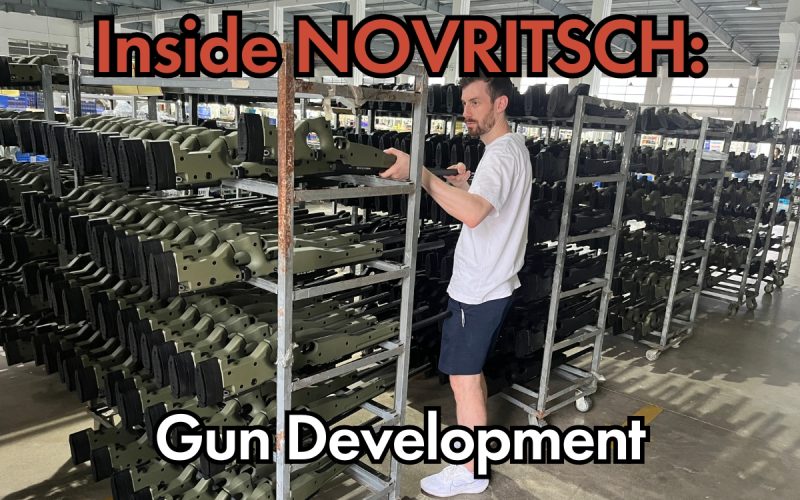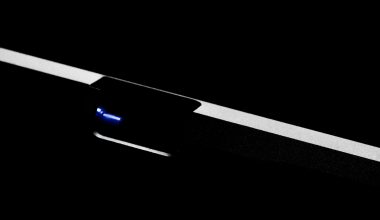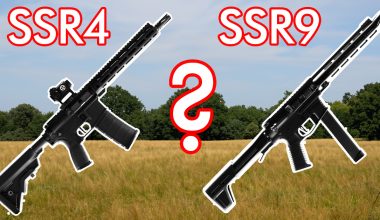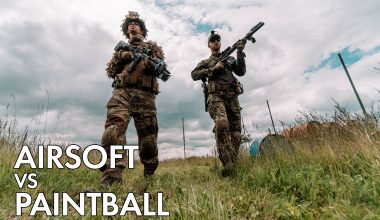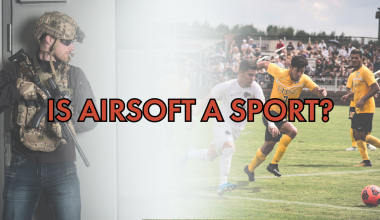For once, a special topic. You don’t often see an airsoft company sharing such an internal process, but since we think this information is interesting, to say the least, here you go – this is how we develop airsoft replicas. And it’s not what you think.
2️⃣ Developing an airsoft gun takes 1-2 years to get into full production, as was the case with the SSP5.
Not into reading? Watch video
We created a video to sum up this topic. In the world of airsoft, it’s a unique piece:
All steps: overview
In general, developing an airsoft replica involves a ton of small processes. Yet, we can summarize it in the following steps:
- Idea brainstorming
- Designing
- Manufacturing process
- Pre-Production
- Quality Control (throughout the entire process)
- Mass Production
How do we come up with gun ideas?
There is a lot of brainstorming and meeting into every idea. It’s not like we just dig into anything we see. An idea has to be approved by Chris and undergo a few rounds in the meeting room. Every idea has to be feasible from a few perspectives, be it the market one (people will want it), the manufacturing one (we can make it ), or the monetary one (we can keep the price reasonable for everyone).
At the end of the brainstorming/idea process, there is a set of requirements the product has to meet down the path of development. That can include features like “it can hop 0,4g BBs” or prices “has to cost under 300 bucks”. There are usually multiple of these for each of the projects.
Let’s take the SSP5 as an example. It was inspired by the custom Hi-Capas Chris saw being used in the Hong Kong Speedsoft scene. We thought, “Why not make these ultra-expensive custom guns more available to everyone?” So, that’s what we aimed for. Whether coming up with a brand-new airsoft gun or fixing something that bugs players, we dig into each idea to see if it can work and what it could mean for airsofters like us.
From Idea to Prototype
Moving from an idea to an actual product is a very long road. We spend a lot of time on 3D modeling, brainstorming, and building and testing prototypes to ensure that every prototype meets our expectations.
This prototyping phase can take close to a year of work. All that time is needed to design parts of the gun, and then to fix the plethora of compatibility and fitment issues that arise with entirely new designs. Essentially a back and forth, trying to make a gun that shoots and fits the initial requirements.
When all of this tinkering is done, we end up with an actual working prototype – a gun that, despite not being as durable as production units, can withstand shooting and give you a good feeling of how the gun will actually work.
Manufacturing Process
Making airsoft guns is not easy, as some may suggest. With a working prototype, it’s time to look for suppliers. That may come as a surprise to some, so let us dive into the airsoft manufacturing scene a bit – to give you context.
🤔 NOVRITSCH does not own an airsoft factory. We choose the best possible partner for each of our guns.
Predominantly, airsoft gear is produced in Asia, as there are decades worth of local expertise, superior manufacturing equipment, and skilled labor, making it the prime choice for bringing new airsoft designs to life. However, there’s a twist: airsoft guns are often legally classified as firearms. And in most places, making straight up guns is strictly regulated.
For example, in places like the PRC, transporting even a single gun part is highly regulated, not to mention the challenges of starting a new airsoft factory. Due to these legal and logistical obstacles, owning a factory isn’t realistic for many airsoft brands. Instead, they rely on existing factories that can deliver the manufacturing power needed to make an airsoft gun. However, the fact that a gun is made in a partner factory does mean all of the guns from that factory have the same design/features, internally or externally.

Therefore, for each airsoft gun or development project, we carefully choose the best factory capable of meeting our needs, with the ideal supplier varying based on numerous factors, including their manufacturing experience with the specific product in question.
Pre-production
The goal of pre-production is to make sure the selected manufacturing methods can reliably turn a single prototype into thousands of working and reliable airsoft guns. At this stage in the process, the factory makes moulds for each part of our prototype and assembles the first factory sample, which, surprise, surprise, almost never works as intended.
Factory Sample is the first prototype gun manufactured using standard mass-production methods.
🔧 Pre-production is the part of development between 1 working prototype and a launched mass production.
This process involves many small adjustments to the moulds, CNC instructions, and even sometimes to the prototype’s original design. This process repeats a few times, resulting in a single replica made in the exact same way a final product piece would have been manufactured.
Now, it’s time for the preproduction phase – making 20 pieces or so. Think of it as a small mass production sample because it might be possible that the one single factory sample was just barely within tolerance. Still, when manufacturing 3000 pieces of something, you must be sure that the process is repeatable more than once. These samples go through the full Quality Control (QC) protocol to ensure everything is good to go.
How does NOVRITSCH Quality Control work?
Since we have already touched on the topic, let’s talk QC (Quality Control). Even if you have the craziest or the most advanced airsoft gun technologically, without QC, it’s worthless. So, over the years, we have developed a huge (and we mean HUGE) internal QC list that every gun needs to pass at least twice before it gets through the process.
This list has up to 200 singular items (depending on the replica), which can be anything like “Shoot the gun 10,000 times.” Yes, we have QC footage of a guy shooting a 5 Joule sniper rifle 10,000 times – great workout, btw. There are all kinds of different tests; for example, somebody has to drop one of the guns more than 10 times from different angles on concrete to test durability or if the gun chronos consistently.
First, every gun goes through a general QC process. You can think of it as a regular function check: if the gun operates as it should, if the bolt pull is smooth, or if the hop-up actually works.
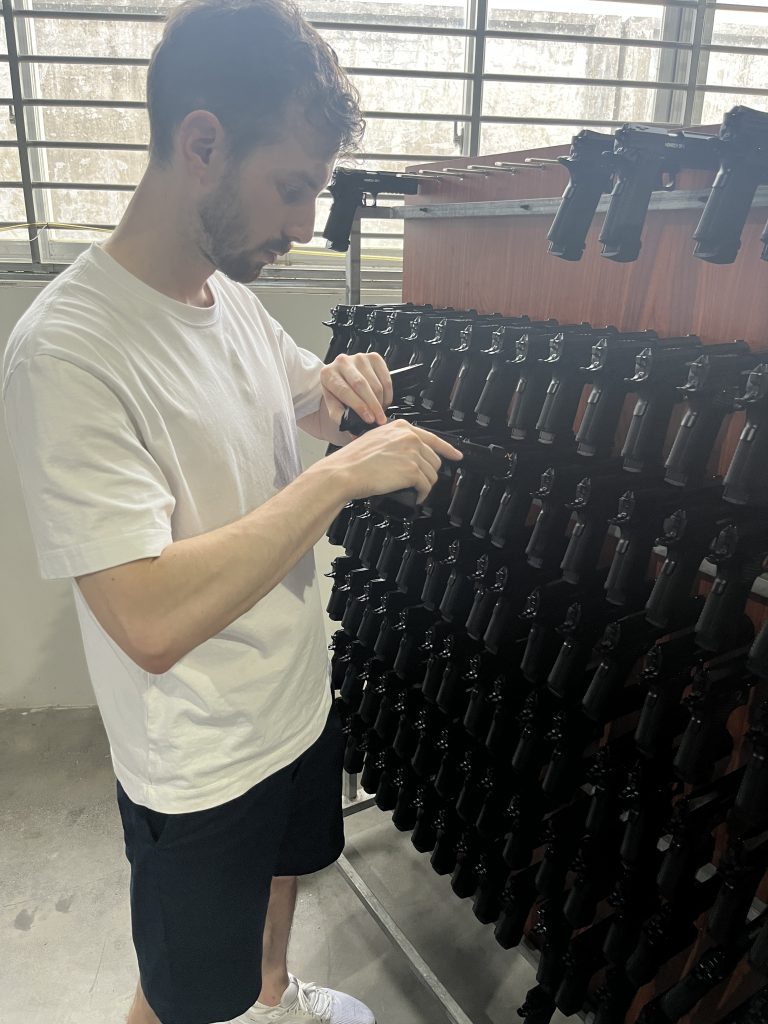
Then, roughly 1% of every gun batch goes through the full QC protocol. As we mentioned before, it is huge and can take one person up to two days to complete the quality check on one gun. With batches up to 3000 pieces, you can pretty easily see how 1 person can work a month just to QC and give the green light to that one batch. And that’s only if everything goes right.
And guess what happens if one of the guns fails somewhere: the entire batch will have that failure checked. After all, having a 10% failure rate would be an actual disaster. For clarity, this is all the times in the development process where a gun undergoes all the QC checks:
- Pre-production QC – does the one production piece work as intended in all aspects?
- Individual Parts QC – before mass production assembly starts, are all the subparts (frames, trigger assemblies, gearbox shells, etc.) good to go?
- Main mid-production QC – when mass production hits 50%, a total of 1% of the entire batch undergoes full QC. This is the most time-consuming part of the process
- Regular QC – Every gun has to go through a basic checklist.
- Package QC – when the mass production is complete, we check for issues with packaging, manuals and other stuff.
- Sanity check in Vienna – when the stock arrives in Europe, we check it one last time, just to be sure.
Mass Production
After the green light from the QC process on pre-production samples, it is time to pull the trigger on mass production. The factory goes into production, and that’s where our most thorough quality control processes kick in. We do, in total, 5 – 6 independent QC checks in our production.
A disclaimer is in place. More than other parts of development, the QC process is a thing of constant improvement. The level of control was not always the same as a few years back, NOVRITSCH was a considerably smaller company. We could simply not afford to have multiple people on the ground in the factories just checking the production. That has now changed, allowing us to step up the game.
The first of the 5 steps is when the factory manufactures enough pieces of all the replica parts to start the assembly process. Our QC team jumps in for the first check as this allows us to check the internals easiest.
Next one up is as the first mass production guns get assembled, we do a quality check of the assembly, think stuff like if everything is tightened properly or if there is enough screw glue. After those two checks, we let the production proceed.
3rd check is at 50% of the batch. At that point, we go through the complete QC list we talked about earlier. We select several guns that must pass each test in the list. The tests include a lot, as mentioned before; this point of production is critical. If we spot an issue here, it’s not ideal, but it’s easier to fix 50% of the batch than the whole batch, which could be 3 000 pieces. After all that is finished, we let the rest of the batch be manufactured.
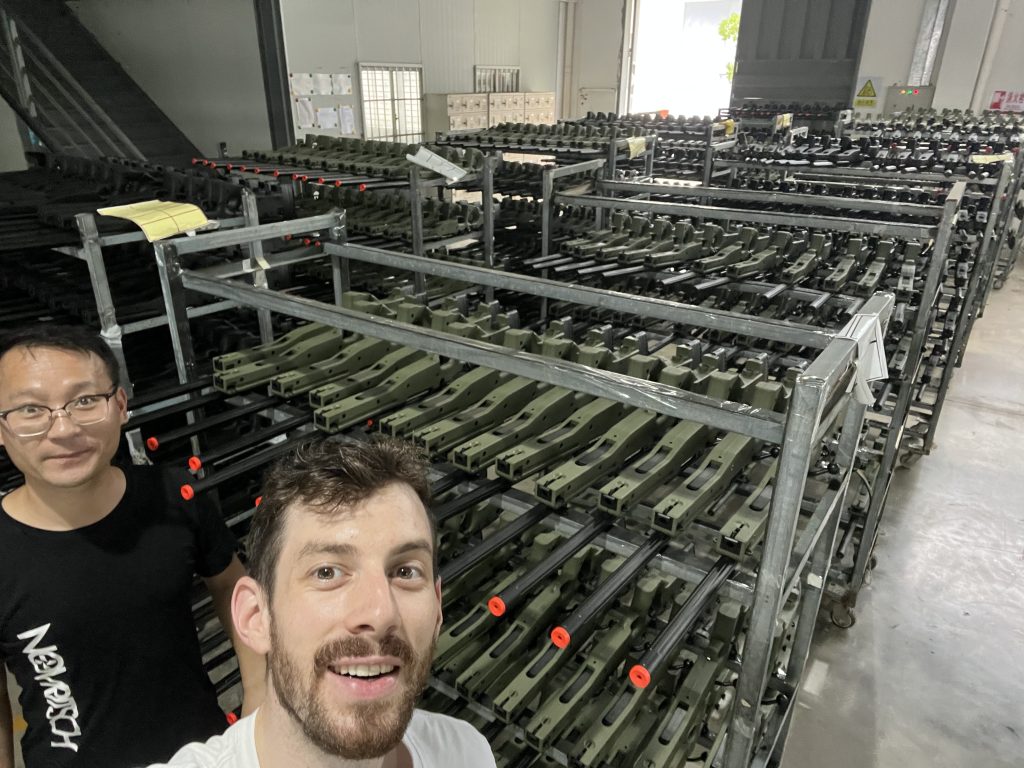
There are still two checks to be had. One still happens at the factory, where we double-check everything on roughly 10-20 guns. To be sure, think of full visuals of the finished gun, the packing, and the function check.
Finally, the guns are shipped to our warehouse in Austria. Here, we take a few samples for a final sanity check back in our office. This last check, just before the guns hit the shelves, is a crucial step in ensuring the product is ready for purchase.
When all that is done, you can find that gun on our website, taking just a few minutes to order.
